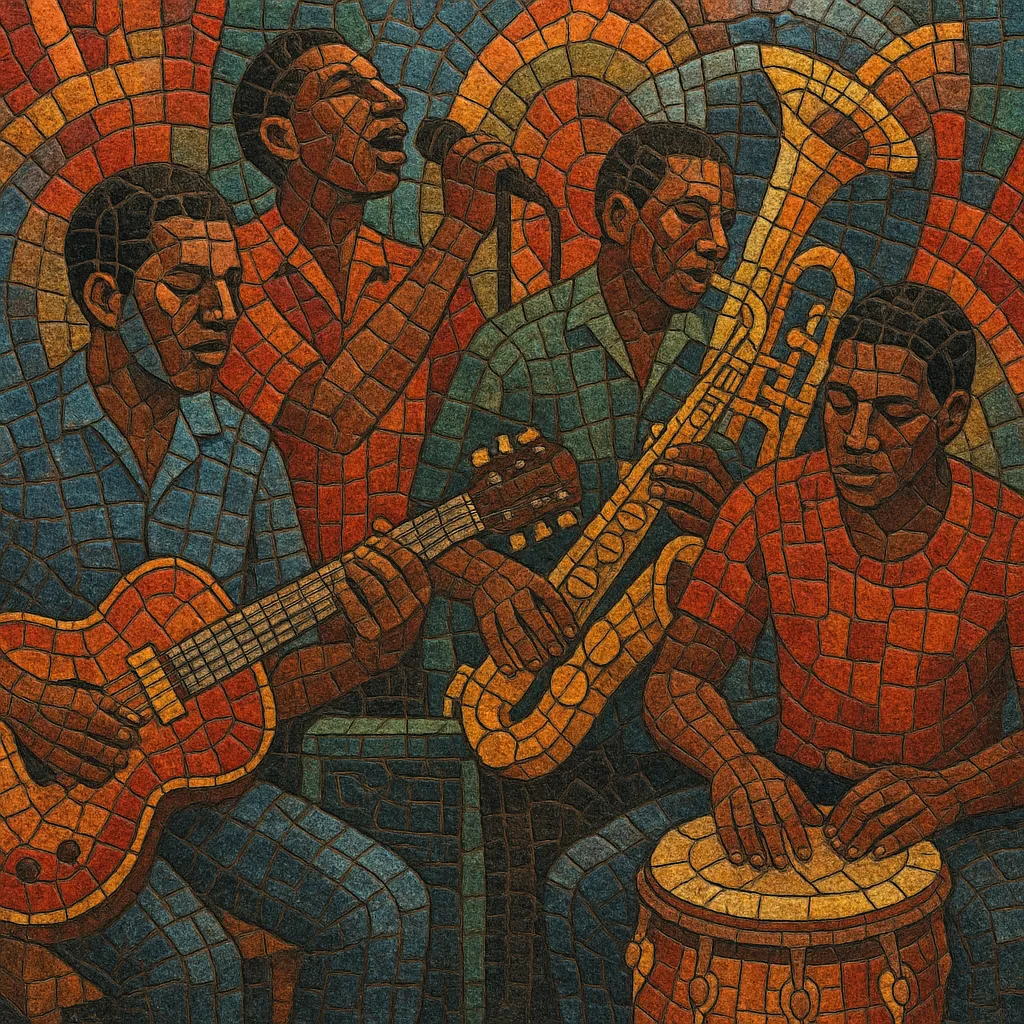Tumbélé is a lively, guitar‑ and horn‑driven dance music that emerged in the French Caribbean (Guadeloupe and Martinique) during the 1960s.
It blends local Afro‑Creole drumming traditions (notably bèlè and gwo ka) with Cuban and pan‑Latin idioms such as son, guaracha, pachanga, and mambo, plus a touch of calypso and Haitian compas. The result is a raw, percussive, and highly syncopated groove built around tumbao‑style bass lines, riffs for saxophones or trumpets, and call‑and‑response vocals in Antillean Creole.
While less polished than later zouk, tumbélé captures the sound of island dance bands of the 1960s–70s: electric guitar, organ, tight rhythm sections, and carnival‑tested percussion propelling compact, verse‑chorus songs and extended montuno‑like vamps.
Tumbélé took shape in the French Antilles during the 1960s, as island dance bands fused local Afro‑Creole rhythms (bèlè in Martinique and gwo ka in Guadeloupe) with Cuban and broader Latin currents (son, guaracha, pachanga, mambo) that had swept the Caribbean since the mid‑20th century. Haitian compas and Trinidadian calypso also filtered into the sound, aided by migration, touring bands, radio, and record exchange. Small electric combos with horns, organ, and strong percussion sections became the typical format.
Independent labels and studios in the Antilles (notably the Debs imprint in Guadeloupe) documented a wave of bands who played the emerging tumbélé beat at dances, fêtes, and carnival events. The style’s signature came from the meeting of tumbao‑like bass patterns and Antillean hand‑drum phrasing, with Creole call‑and‑response vocals, short chorus hooks, and horn riffs. Tumbélé thrived alongside biguine and early cadence/kadans scenes, feeding a regional ecosystem of Afro‑Latin dance music.
By the late 1970s and into the 1980s, production aesthetics modernized and zouk rose to international prominence. Tumbélé’s percussive drive, Creole vocal approach, and dance‑band instrumentation fed directly into early zouk and its romantic offshoots, even as many classic tumbélé recordings remained cult favorites. Later reissue projects and compilations helped reframe tumbélé as a crucial missing link between traditional bèlè/gwo ka, 1960s pan‑Latin dance styles, and the contemporary French‑Caribbean pop sound.


